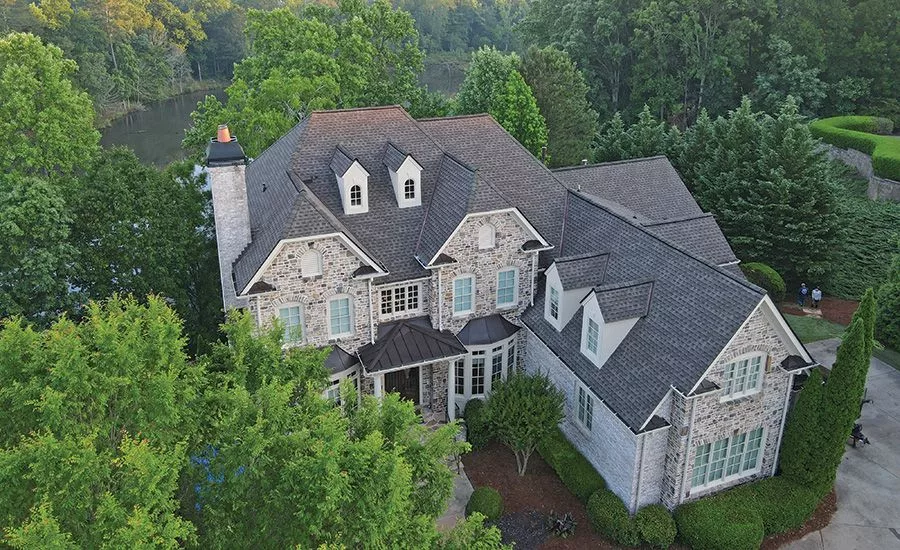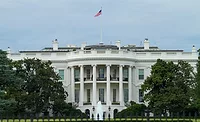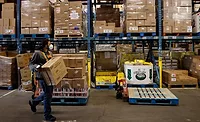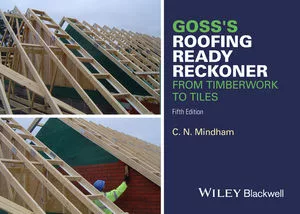Strategic Maneuvers
Roofing Tariffs: How to Protect Your Profits
A recent Midwest Roofing Contractors Association webinar offers tips for reducing the impact of tariffs

As the domestic construction industry — including roofing - seeks answers to navigate President Donald Trump’s tariffs, a recent webinar presented by the Midwest Roofing Contractors Association offered suggestions to help mitigate the consequences.
While the cost of all imported goods has increased by 10% due to a universal tariff, with certain metals and other commodities exceeding that amount, “Liberation Day” tariffs, which remain temporarily paused, may be reinstated within the next 60 days. How can contractors prepare for a possible inevitability?
“I have a feeling the numbers that we’re going to see for April are going to be even more volatile than they were before,” said Eric Kjellander, a partner at the law firm Taft Stettinius & Hollister, during the MRCA webinar on April 24.
A recent survey by Plant-Tours found that 59% of construction professionals cited product cost increases as the top unexpected impact of tariffs. In comparison, 52% have delayed or canceled projects due to pricing uncertainty.
Even the March construction material pricing index reflected rising costs in construction materials, well before the “Liberation Day” tariffs were implemented and later paused. Additionally, the tariffs are likely to result in supply chain disruptions as businesses scramble to source cheaper materials from alternative suppliers.
RELATED
Trade War Fallout: Contractors Are Delaying Projects and Cutting Crews
“These tariffs have already materially diminished the outlook for construction activity in 2025,” said Associated Builders and Contractors Chief Economist Anirban Basu.
“Many businesses are poised to delay or even cancel planned capital investments given the current business environment and daily market convulsions,” he added. “Conditions will likely deteriorate further if elevated tariff rates remain in place for any meaningful length of time."
In the face of uncertainty, contractors can limit the damage tariffs will cause to their bottom lines.
Supply Chain Disruptions
A simple way to mitigate tariffs is to purchase domestic products. However, Kjellander said this might result in disruptions of a different kind.
“I think the initial inclination when you're talking about tariffs from imported goods is ‘let’s turn to our domestic partners, our domestic suppliers.’ Well, if their demand all of a sudden doubles, triples, quadruples, whatever it is, we're going to start looking at some supply chain issues.”
Ryan Menyhart, also a partner at Taft, echoed these concerns, saying shipments are being delayed to ensure the proper tariffs are implemented.
“One result of all this is we are already seeing massively increased customs enforcement actions,” he said. “U.S. customs is detaining shipments at ports to inspect them to figure out whether the tariff rate that's being declared is correct and potentially applying new tariffs to them.”
On the labor side, 45% of companies responding to the Plant-Tour survey reported workforce reductions of 5–10% tied to tariff pressures.
Trent Cotney, Roofing Contractor’s Legal Insights columnist and a partner at Adams and Reese LLP, summed it up neatly in a recent podcast: “The key is that, you know, I don't know what the lay of the land looks like six months from now,” Cotney said.
“There could be no tariffs. There could be a lot more tariffs, right?” he added. “But what you really need to do is protect yourself and have open and honest communications of distribution and manufacturing, keep your ear to the ground.”
Mitigation Options
As detailed by Taft’s attorneys during the MRCA’s webinar, much of what contractors can do to mitigate these effects is to include contract clauses that aren’t in industry-standard forms. These include:
Force majeure. Historically, this addresses unforeseen events, such as riots, acts of God, and pandemics, which are beyond the control of either party and can hinder a project. Supply chain issues can be addressed here, and while economic issues tend not to be recognized, some clauses include economic hardship, acts of government and unprofitability.
If recognized, it can result in excusable delays to provide more time, but may not be compensable.
Price escalation. These acknowledge that there can be volatility in material pricing and offer ways to handle those increases. There are multiple types of these clauses, including:
- Any increase: If material prices increase, the owner must pay the additional cost. This is not a popular clause with owners, but it is an option.
- Threshold: This identifies a baseline for a specific material’s price, using an industry standard, and sets a limit on how much of an increase entitles the contractor to additional compensation, such as 5%. Focus on materials that are likely to have volatile pricing.
- Delay: When projects are delayed and, as a result, purchasing materials for that project is delayed, the initial price is held up until a certain day. When that day arrives, the contractor receives additional compensation.
Change in law. If a contract starts and a law changes that would cause delays, additional costs, or compensation to the contractor, the contractor is entitled to a change order to address those changes. This can include increased taxes, which some argue include tariffs. However, there are disagreements over whether executive orders from the president are considered a change in law.
Substitution of materials. If materials are subject to 100% or more tariffs, it’s worth researching whether substitutes can be made for them. A contract's phrase “or equal” usually determines if a reasonable substitute can occur. It is advisable to have written approval from the owner to make a substitute.
Contingency. This is a budgeted amount that's set aside to address unpredictable costs on a construction project. These tend to be external events that neither party controls.
Tariff clause. Though unusual, this type of clause may see more use in the coming months. These can be separate clauses to address shifting costs due to tariffs or part of a clause to provide additional compensation to shift the tariff burden to another upstream party, said Kjellander.
“Have a discussion with the owner, talk about really what the market conditions are and what the market looks like and what those fluctuations are and the volatility,” Kjellander said. “If you're going to be forced to provide a price today, the contractor really needs to price in that risk and price in that uncertainty that these material prices are going to go up pretty dramatically.”
Other Avenues for Relief
If contractors are unable to use clauses to address significant increases, legal doctrines outside of contracts may provide additional support.
The American Institute of Architects’ A201, Section 3.6, includes a provision for contractors to pay for consumer use and similar taxes, according to Kjellander.
If a tariff is enacted or increased after the contract is in effect, it could provide an avenue to recoup costs. In the same document, Section 3.7 states that contractors pay for permits, fees, licenses, and inspections.
“I’ve always associated that as fees associated with the building inspector coming out and looking at your job, but that might provide an argument that you’re entitled to additional costs related to tariffs,” he said.
Section 13.4.1 relates to owners bearing costs associated with tests, inspections, and approvals, and again, a case could be made for potential recovery of incurred costs from tariffs.
The “commercial impracticability” doctrine excuses a party from fulfilling a contract if unforeseen circumstances, like costs or difficulty, prevent them from reasonably doing so. Kjellander cautioned that this document should not be relied upon to recover costs, but could provide some relief.
Otherwise, Taft’s attorneys said that outside of contracts and doctrines, contractors should communicate early and often with suppliers and customers. Contractors can also diversify their suppliers.
Several states are suing the Trump administration, and some private lawsuits supported by advocacy groups are challenging the administration's right to apply emergency tariffs globally.
If successful, these could result in suspending or removing some tariffs. However, litigation is slow, so contractors cannot depend on this in the short term.
Looking for a reprint of this article?
From high-res PDFs to custom plaques, order your copy today!








